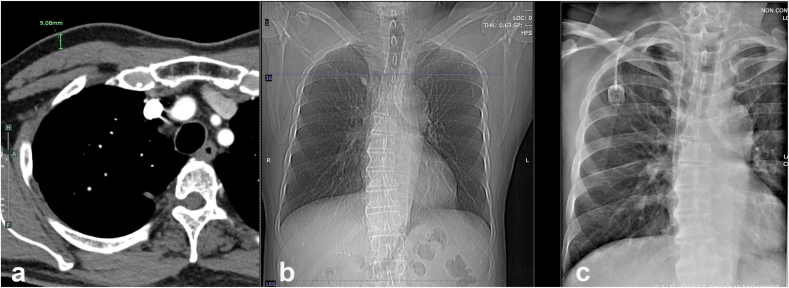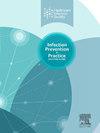The correlation between subcutaneous fat thickness and the incidence of chemoport-related infection
IF 1.9
Q3 INFECTIOUS DISEASES
引用次数: 0
Abstract
Background
This study aimed to examine the correlation between subcutaneous fat thickness and chemoport-related infection and to determine the risk factors that lead to complications associated with chemoport.
Methods
This study retrospectively reviewed 363 patients with chemoport insertion between May 2018 and May 2022. The patients were classified into three groups, with 121 patients in each group, based on the tertiles of subcutaneous fat thickness measured in the computed tomography (CT) scan. The incidence of short-term and long-term complications, including dislocation, infection, and malfunction, were obtained and compared between the three groups. The risk factors of chemoport-related complications were analysed in multivariate analysis.
Results
The incidence of infection in the low, middle, and high subcutaneous fat thickness groups were 1.7%, 3.3%, and 0%, respectively (P = 0.131). No short-term complications occurred in this study group. After one year of follow-up, 11 patients (3.0%) had long-term complications; 6 patients (1.7%) developed chemoport infection, while five patients (1.4%) had chemoport dislocation. In multivariate analysis, the risk of dislocation was significantly higher when insertion was performed via the left internal jugular vein (OR = 9.87, P=0.033).
Conclusions
The thickness of subcutaneous fat does not significantly correlate with the incidence of chemoport infection, and placement of the port on the left side of the chest wall via the left internal jugular vein is the risk factor for chemoport dislocation.

皮下脂肪厚度与化疗口相关感染发生率的关系。
背景:本研究旨在探讨皮下脂肪厚度与放化疗相关感染之间的关系,并确定导致放化疗相关并发症的危险因素。方法:本研究回顾性分析了2018年5月至2022年5月期间363例化疗孔插入患者。根据CT扫描测量的皮下脂肪厚度,将患者分为三组,每组121例。比较三组间脱位、感染、功能障碍等短期和长期并发症的发生率。采用多因素分析方法分析化疗相关并发症的危险因素。结果:皮下脂肪厚度低、中、高组感染发生率分别为1.7%、3.3%、0% (P = 0.131)。本研究组未发生短期并发症。随访1年后,11例(3.0%)出现长期并发症;6例(1.7%)发生化疗孔感染,5例(1.4%)发生化疗孔脱位。在多因素分析中,经左颈内静脉置入时脱位的风险明显更高(OR = 9.87, P=0.033)。结论:皮下脂肪厚度与放化疗孔感染发生率无显著相关性,放化疗孔经左颈内静脉置于胸壁左侧是放化疗孔脱位的危险因素。
本文章由计算机程序翻译,如有差异,请以英文原文为准。
求助全文
约1分钟内获得全文
求助全文
来源期刊

Infection Prevention in Practice
Medicine-Public Health, Environmental and Occupational Health
CiteScore
4.80
自引率
0.00%
发文量
58
审稿时长
61 days
 求助内容:
求助内容: 应助结果提醒方式:
应助结果提醒方式:


